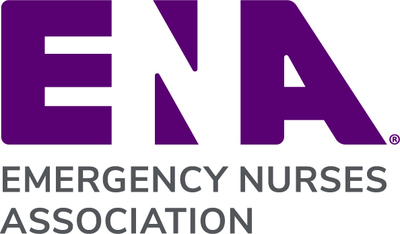Reducing Pain, Fear, Anxiety During Needle Related Procedures
SOURCE Emergency Nurses Association
Journal of Emergency Nursing highlights new ENA clinical practice guideline
SCHAUMBURG, Ill., July 22, 2025 /PRNewswire/ -- Approximately 35 million ED visits in the U.S. in 2019 were by children 17 years or younger. Oftentimes, these visits include needle-related procedures which can bring about feelings of fear, anxiety and stress.
The July 2025 issue of the Journal of Emergency Nursing features an ENA clinical practice guideline and a joint position statement focused on providing patients with efficient and pain-free care when it comes to IVs.
Current pain management in pediatric patients is often inadequate. The clinical practice guideline, titled "Interventions to Reduce Needle-Related Pain and Distress in Pediatric Patients," highlights some recommendations to help reduce anxiety and fear, including parental holding, appropriate distraction techniques, topical and transdermal anesthetics, and local application of ice and/or vibrations.
"Having these resources available for nurses is critical, as it gives them evidence-based guidance on practice they are likely to use in an ED setting," said Journal of Emergency Nursing Editor-in-Chief Anna Valdez, PhD, RN, PHN, CEN, CFRN, CNE, FAEN, FAADN. "This is also great information for the public to know so they can be prepared to help their children who may be nervous around needles or knowing what to expect in an emergency when an IV isn't a viable option."
First published in 2019, but revised in 2025, ENA's joint position statement with the Infusion Nurses Society "The Role of the Nurse in the Use of Intraosseous Vascular Access Devices" focuses on the necessity of IO VADs as an option when IV access is not easily obtained, not already present or able to be established immediately, or there are no appropriate and visible veins.
IO VADs can be integral to reducing the time it takes for medications and fluids to get to patients, adult or pediatric, in resuscitation situations. That is why it's the position of ENA and INS that nurses be trained in the proper technique, proper procedures are in place and standardized training programs and equipment are available in emergency departments.
Articles in the July issue include:
- "Nil Per Os in the Emergency Department: A Quantitative Study on Fasting Before Presumptive Emergency Surgery"
- "Impact of Registered Nurse Staffing, Workload, and the Practice Environment on Burnout in Emergency Nurses"
- "Implementing "ER is for Emergencies" Practice Guideline to Reduce Nonemergent Emergency Department Visits"
The Journal of Emergency Nursing, ENA's peer-reviewed academic journal, is published six times a year with original research and updates from the emergency nursing specialty, while also covering practice and professional issues.
About the Emergency Nurses Association
The Emergency Nurses Association is the premier professional nursing association dedicated to defining the future of emergency nursing through advocacy, education, research, innovation, and leadership. Founded in 1970, ENA has proven to be an indispensable resource to the global emergency nursing community. With nearly 45,000 members worldwide, ENA advocates for patient safety, develops industry-leading practice standards and guidelines, and guides emergency health care public policy. ENA members have expertise in triage, patient care, disaster preparedness, and all aspects of emergency care. Additional information is available at www.ena.org.
ENA Media Contact:
Morgan Wietecha
Media Relations Strategist
847.460.4038
[email protected]
![]() View original content to download multimedia:https://www.prnewswire.com/news-releases/reducing-pain-fear-anxiety-during-needle-related-procedures-302510984.html
View original content to download multimedia:https://www.prnewswire.com/news-releases/reducing-pain-fear-anxiety-during-needle-related-procedures-302510984.html

©PR Newswire. All Rights Reserved.
Information contained on this page is provided by an independent third-party content provider. XPRMedia and this Site make no warranties or representations in connection therewith. If you are affiliated with this page and would like it removed please contact [email protected]


